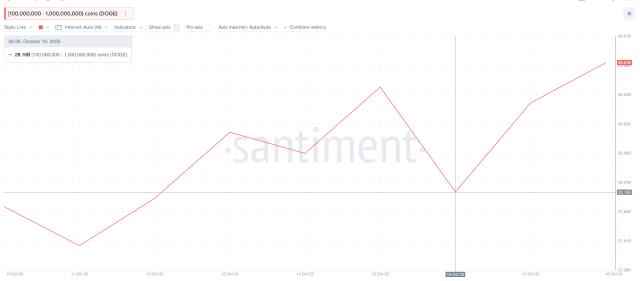Bitcoin is back on the ropes. After printing an all-time high near $126,200 less than two weeks ago, the world’s biggest crypto slid another ~7% in the last 24 hours and briefly traded below $104,000—its lowest level in ~4 months. Ethereum, BNB, Solana and others followed lower.
—
According to Barron’s, the slide accelerated early Friday as global investors dumped risk assets, sending crypto and equities lower in tandem. Ethereum fell nearly 7%, BNB dropped over 11%, and Solana lost 8%. Even crypto-exposed stocks like Coinbase, Robinhood, and MicroStrategy opened in the red.
The market, once buoyed by optimism over political tailwinds and institutional adoption, is now grappling with a new reality: macro stress is back, and the flight to safety has returned — this time with gold, not Bitcoin, as the preferred refuge.
2025’s Rollercoaster
Bitcoin’s year-to-date trajectory has been anything but boring. The token began 2025 riding a wave of political optimism tied to the Trump administration’s crypto-friendly stance.
The inauguration rally in January saw Bitcoin jump from $91,000 to over $106,000, fueled by hopes for deregulation, U.S.-based mining incentives, and the establishment of the so-called Strategic Bitcoin Reserve.
But as the year unfolded, policy volatility set in. Trump’s “Liberation Day” tariff policies rattled global trade, sending risk assets tumbling in March and April. Bitcoin fell briefly below $76,000, its lowest point of the year.
By summer, however, optimism returned. Inflation cooled, ETF inflows surged, and retail traders re-entered the market, pushing Bitcoin steadily upward through August. On October 5, it broke a new record high of $126,198 — only to lose nearly $20,000 in market value within days.
The Immediate Triggers: Politics, Policy, and Fear
Two forces are driving this latest correction.
1. The Renewed U.S.–China Tariff Clash
Earlier this month, the Trump administration announced plans to impose 100% tariffs on Chinese imports in response to Beijing’s new export restrictions on rare earth minerals — critical components for defense, tech, and electric vehicles.
Neither side has budged, raising fears of a full-blown trade escalation that could disrupt global manufacturing and tech supply chains. For investors already nervous about inflation and slowing growth, that threat has been enough to pull capital out of speculative assets like crypto.
2. The Prolonged U.S. Government Shutdown
The ongoing 17-day government shutdown has deepened concerns over fiscal dysfunction in Washington. Disagreements over spending priorities — from healthcare subsidies to social programs — have stalled progress, raising fears of delayed federal payments and lower consumer confidence.
Markets hate uncertainty, and this one hits close to home.
“When political headlines dominate every trading session, traders move toward liquidity and predictability,” noted one strategist cited by Fast Company. “That means dollars, Treasuries, and gold — not Bitcoin.”
Gold Takes Center Stage
If Bitcoin was once seen as “digital gold,” the real thing is stealing the spotlight this month. Gold has risen 18% in October alone, reaching $4,352 per ounce, just shy of record highs. Over the past 24 hours, while Bitcoin fell 7%, gold climbed 1.1%.
As @WatcherGuru highlighted on X, gold’s total market capitalization now exceeds $30 trillion, dwarfing Bitcoin’s sub-$3 trillion valuation and underscoring how deep traditional safe-haven demand remains.
Investors who rotated into Bitcoin earlier this year as a hedge against inflation are now cashing out into metal — especially institutional allocators looking for near-zero correlation and high liquidity.
The shift isn’t necessarily an indictment of Bitcoin’s store-of-value thesis, but rather a reversion to familiarity. When fear dominates, traders reach for assets with centuries of psychological comfort behind them.
Technical Breakdown: Breaching the 200-Day
Technically, Bitcoin’s sharp move below its 200-day moving average has amplified the selling pressure. According to analysts quoted by Barron’s, this is “a dangerous dynamic” — not just a dip, but a sign of a market searching for a new equilibrium.
Historically, Bitcoin’s price falling below the 200-day line triggers several weeks of sideways action before recovery. But this time, there’s another wrinkle: macro headwinds and record gold flows could slow that rebound.
“Bitcoin is being forced to prove its resilience again,” said one trader. “We’ve seen this cycle before — a parabolic top, a correction, a long consolidation. The difference now is that macro factors are hitting crypto and equities simultaneously.”
Despite the volatility, the broader narrative for Bitcoin remains intact. The network continues to process record transaction volumes post-halving, Lightning adoption is growing, and global ETF inflows are still net positive.
Meanwhile, onchain data shows that long-term holders are not selling — they’re accumulating. Exchange balances remain at multi-year lows, suggesting that this correction is primarily short-term positioning, not structural weakness.
As the market digests policy headlines and macro jitters, most analysts expect Bitcoin to stabilize around the $100,000–$108,000 range before attempting another leg higher toward year-end.
The Bottom Line
Bitcoin’s latest drop is less about failure and more about friction — the growing tension between the promise of decentralized finance and the pull of traditional safe-havens in uncertain times.
The macro landscape remains fluid: if tariff tensions cool and the U.S. shutdown resolves, Bitcoin could quickly reclaim its footing. But for now, the message is clear — in a nervous market, even the boldest investors crave certainty.
Gold provides that comfort. Bitcoin still promises the future. The question for traders is simple: how much volatility can they handle while waiting for it?
Market insights adapted from Fast Company and Barron’s coverage.
Bitcoin’s October Slip: Why the 'Crypto King' Is Dropping as Gold Shines
Sector:

Source
Disclaimer: The content above is only the author's opinion which does not represent any position of Followin, and is not intended as, and shall not be understood or construed as, investment advice from Followin.
Like
Add to Favorites
Comments
Share






